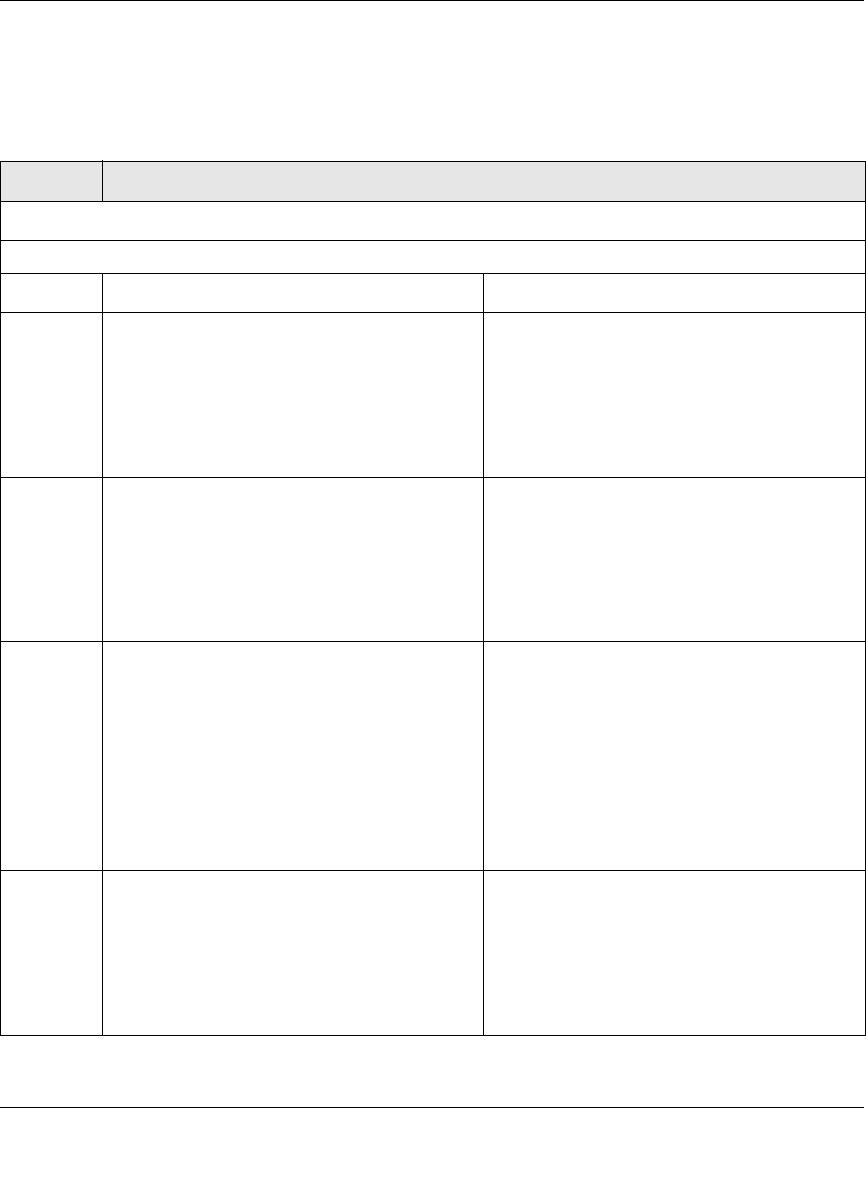User's Manual
Table Of Contents
- ProSecure Web/Email Security Threat Management (STM) Appliance Reference Manual
- Contents
- About This Manual
- Chapter 1 Introduction
- Chapter 2 Using the Setup Wizard to Provision the STM in Your Network
- Choosing a Deployment Scenario
- Understanding the Steps for Initial Connection
- Logging In to the STM
- Using the Setup Wizard to Perform the Initial Configuration
- Setup Wizard Step 1 of 10: Introduction
- Setup Wizard Step 2 of 11: Networking Settings
- Setup Wizard Step 3 of 11: Time Zone
- Setup Wizard Step 4 of 11: Email Security
- Setup Wizard Step 5 of 11: Web Security
- Setup Wizard Step 6 of 11: Email Notification Server Settings
- Setup Wizard Step 7 of 11: Update Settings
- Setup Wizard Step 8 of 11: HTTP Proxy Settings
- Setup Wizard Step 9 of 11: Web Categories
- Setup Wizard Step 10 of 11: Configuration Summary
- Setup Wizard Step 11 of 11: Restarting the System
- Verifying Proper Installation
- Registering the STM with NETGEAR
- What to Do Next
- Chapter 3 Performing Network and System Management
- Configuring Network Settings
- Configuring Session Limits and Timeouts
- Configuring the HTTP Proxy Settings
- About Users with Administrative and Guest Privileges
- Configuring Remote Management Access
- Using an SNMP Manager
- Managing the Configuration File
- Updating the Software
- Configuring Date and Time Service
- Managing Digital Certificates
- Managing the Quarantine Settings
- Performance Management
- Chapter 4 Content Filtering and Optimizing Scans
- About Content Filtering and Scans
- Configuring E-mail Protection
- Configuring Web and Services Protection
- Configuring Application Control
- Setting Scanning Exclusions and Web Access Exceptions
- Chapter 5 Managing Users, Groups, and Authentication
- About Users, Groups, and Domains
- Configuring Groups
- Configuring User Accounts
- Configuring Authentication
- Global User Settings
- Viewing and Logging Out Active Users
- Chapter 6 Monitoring System Access and Performance
- Chapter 7 Troubleshooting and Using Online Support
- Appendix A Default Settings and Technical Specifications
- Appendix B Related Documents
- Index

ProSecure Web/Email Security Threat Management (STM) Appliance Reference Manual
Monitoring System Access and Performance 6-15
v1.0, September 2009
Table 6-6 explains the fields of the Total Scanned Services Traffic, Most Recent 5 and Top 5
sections of the Dashboard screen.
Table 6-6. Dashboard: Total Scanned Services Traffic and Most Recent 5 and Top 5
Information
Item Description
Total Scanned Services Traffic (Last 7 Days)
This is a graphic that shows the relative number of traffic in bytes over the last week.
Category Most Recent 5 Description Top 5 Description
Malware • Malware Name. The name of the malware
threat.
• Protocol. The protocol in which the malware
threat was detected.
• Date and Time. The date and time that the
malware threat was detected.
• Malware Name. The name of the malware
threat.
• Count. The number of times that the
malware threat was detected.
• Percentage. The percentage that the
malware threat represents in relation to the
total number of detected malware threats.
Application • Application. The name of the application
that was blocked.
• Client IP. The client IP address from which
the application request came.
• Date and Time. The date and time that the
application request was blocked.
• Application. The name of the application
that was blocked.
• Count. The total number of user requests for
the blocked application.
• Percentage. The percentage that the
application represents in relation to the total
number of detected application requests.
Web • Category. The Web category that was
blocked.
Note: For more information about Web
categories, see “Configuring Web Content
Filtering” on page 4-26.
• Client IP. The client IP address from which
the Web request came.
• Date and Time. The date and time that the
Web request was blocked.
• Category. The Web category that was
blocked.
Note: For more information about Web
categories, see “Configuring Web Content
Filtering” on page 4-26.
• Count. The total number of Web requests
for the blocked Web category.
• Percentage. The percentage that the Web
category represents in relation to the total
number of blocked Web categories.
Spam • Recipient. The intended recipient of the
spam message.
• Subject. The e-mail subject line in the spam
message.
• Date and Time. T
he
date and time that the
spam message was detected.
• Recipient. The intended recipient of the
spam message.
• Count. The number of spam messages for
the intended recipient .
• Percentage. The percentage that the spam
message represents in relation to the total
number of detected spam messages.










